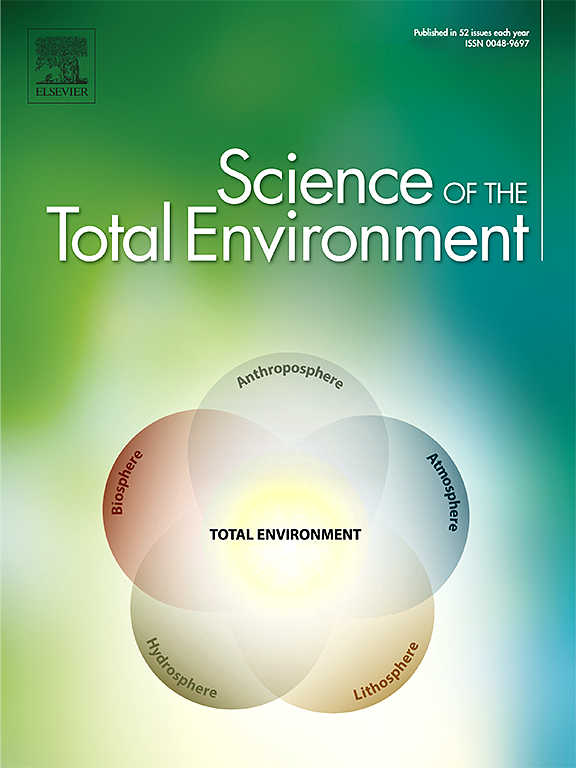利用基于废水的监测预测丹麦因COVID-19而入院的情况
IF 8
1区 环境科学与生态学
Q1 ENVIRONMENTAL SCIENCES
引用次数: 0
摘要
废水监测已成为监测 SARS-CoV-2 循环以准备及时的公共卫生应对措施的基本工具。在本研究中,我们将现有的入院临床数据与废水监测数据进行了整合,并研究了将废水中的 SARS-CoV-2 浓度包括在内是否能改善对丹麦医院中因 COVID-19 而入院人数的预测。我们采用状态空间模型来描述因 COVID-19 而入院的人数(有三周的分类延迟)与最近因 COVID-19 而入院的总人数之间的关系。包括 SARS-CoV-2 的废水浓度在内,我们考虑了 COVID-19 导致的五周住院人数预测。由于三周的分类延迟,预测结果转化为两个后报、一个现报和两个预报。所有时间段的预测值都与观测值吻合。我们发现,如果包括废水浓度(在所有时间段内),对数似然值会更高,而且滞后废水观测以调查废水浓度的变化是否发生在入院人数变化之前,并不会带来进一步的改善。我们的研究表明,纳入废水浓度可提高 COVID-19 导致的入院人数的估计值,这意味着废水浓度增加了有关潜在传播的宝贵信息,而且如果仔细纳入废水浓度,就能更好地了解 COVID-19 导致的近期疾病负担的发展情况。本文章由计算机程序翻译,如有差异,请以英文原文为准。

Predicting hospital admissions due to COVID-19 in Denmark using wastewater-based surveillance
Wastewater surveillance has become a fundamental tool to monitor the circulation of SARS-CoV-2 in order to prepare timely public health responses. In this study we integrate available clinical data on hospital admissions with wastewater surveillance data and investigate if predictions of the number of hospital admissions due to COVID-19 in Danish hospitals are improved by including wastewater concentrations of SARS-CoV-2. We implement state space models to describe the relationship between the number of hospital admissions due to COVID-19, available with a three-week classification delay, and more recent numbers of total hospital admissions with COVID-19. Including wastewater concentrations of SARS-CoV-2, we consider five-week predictions of the number of hospital admissions due to COVID-19. As a result of the three-week classification delay, the predictions translate into two hindcasts, one nowcast and two forecasts. The predicted values for all time frames follow the observed numbers well. We find that log likelihood values are higher when including wastewater concentrations (across all horizons) and that lagging the wastewater observations to investigate whether changes in wastewater concentrations occur before changes in hospital admissions does not result in further improvements. Our study shows that including wastewater concentrations improve estimates of the number of hospital admissions due to COVID-19, implying that wastewater concentrations add valuable information about the underlying transmission and that the imminent development of the near-future disease burden from COVID-19 is better informed when carefully including wastewater concentrations.
求助全文
通过发布文献求助,成功后即可免费获取论文全文。
去求助
来源期刊

Science of the Total Environment
环境科学-环境科学
CiteScore
17.60
自引率
10.20%
发文量
8726
审稿时长
2.4 months
期刊介绍:
The Science of the Total Environment is an international journal dedicated to scientific research on the environment and its interaction with humanity. It covers a wide range of disciplines and seeks to publish innovative, hypothesis-driven, and impactful research that explores the entire environment, including the atmosphere, lithosphere, hydrosphere, biosphere, and anthroposphere.
The journal's updated Aims & Scope emphasizes the importance of interdisciplinary environmental research with broad impact. Priority is given to studies that advance fundamental understanding and explore the interconnectedness of multiple environmental spheres. Field studies are preferred, while laboratory experiments must demonstrate significant methodological advancements or mechanistic insights with direct relevance to the environment.
 求助内容:
求助内容: 应助结果提醒方式:
应助结果提醒方式:


